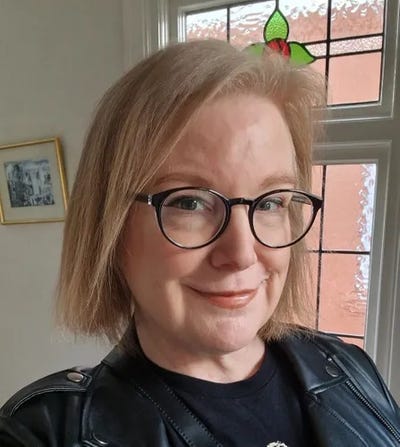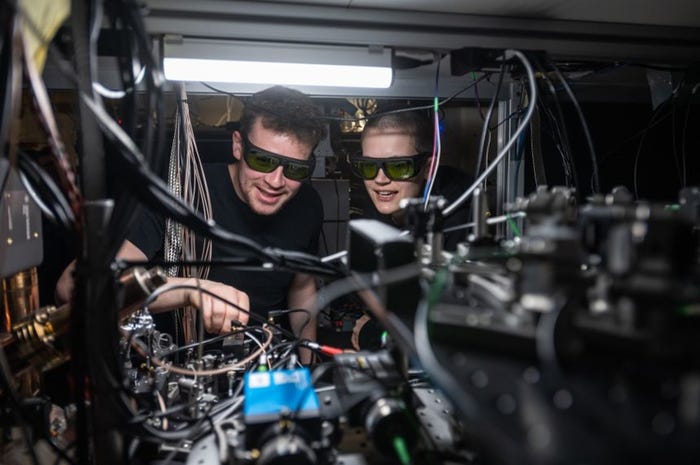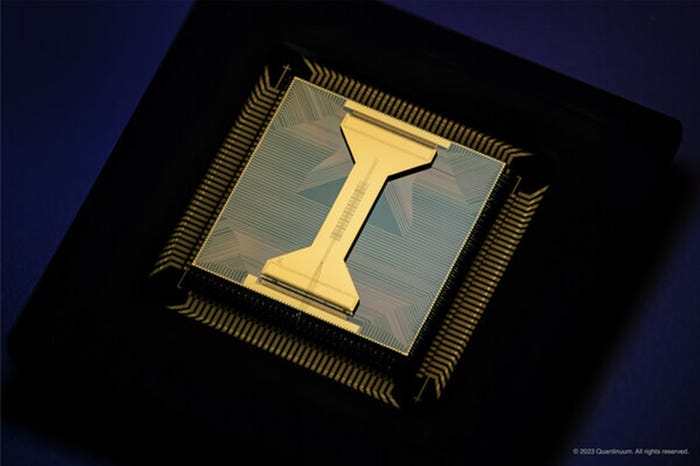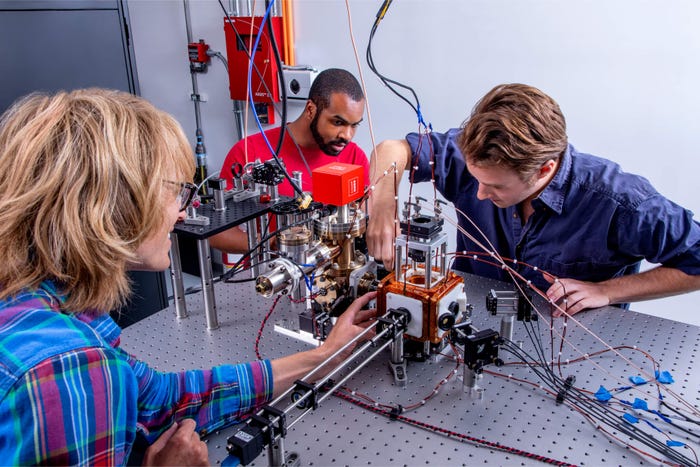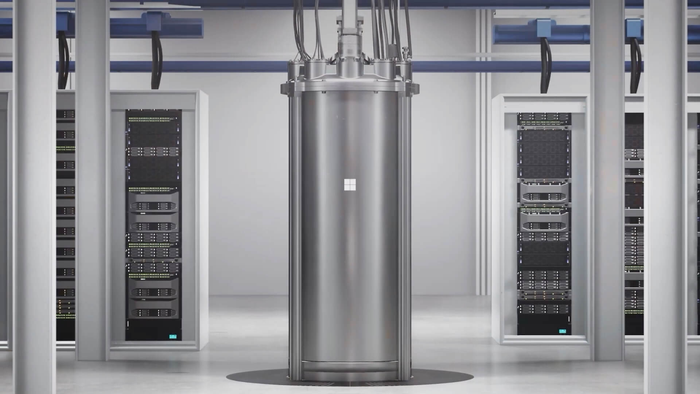
Connects decision-makers and solutions creators to what's next in quantum computing
IonQ Hits $100M in Revenue, Targets Quantum AdvantageIonQ Hits $100M in Revenue, Targets Quantum Advantage
Q&A with IonQ president and CEO Peter Chapman

IonQ is a quantum computing hardware and software company based out of College Park, Maryland. The company recently announced its Q3 financial results, which included $100 million in cumulative bookings, a $25.5 million quantum networking system sale to Air Force Research Laboratory and a roadmap targeting commercial quantum advantage.
In this Q&A, IonQ president and CEO Peter Chapman discusses the company’s technology, highlights from the results report and quantum’s role in the next generation of generative AI.
Enter Quantum: What does IonQ do and what differentiates it from its competitors?
Peter Chapman: There are around 10 qubit modalities – ways to build a qubit – and I don't think it's controversial to say that ion trap today has the best average two-qubit gate fidelity. Sometimes competitors say that they have managed to achieve a single gate pair that matches what we do, but that's early days and I think ion traps are going to win.
The advantage is the qubits are the most natural, meaning that we don't make them, we don't have a yield problem. They're nicely isolated from the environment, extremely stable and we don't interact with them. These are the same devices that are used for atomic clocks, so they last roughly 10,000 years before they decohere.
In these early days, the better the fidelity, the larger and more powerful a circuit you can run. We use an algorithmic qubit (#AQ) benchmark based on the Quantum Economic Development Consortium benchmark, which is representative of the kinds of applications that customers would like to run. Our Forte quantum computer has demonstrated an #AQ of 29, which offers 900 logic gates, #AQ 35 would take you over 1,000 and #AQ 64 will approach 4,000. Now you're starting to talk about a fairly large program that can run without errors starting to creep in.
IonQ just announced its Q3 earnings. What were the highlights?
We hit the first $100 million in revenue over the last couple of years. That’s impressive because before IonQ went public we had no salespeople; our focus was on building the best hardware. That led us to being the 32nd-fastest-growing company in North America in the Deloitte Fast 500 and the fastest-growing company in hardware.
The other one was the Air Force Research Lab (AFRL) announcement that we’re providing two trapped ion quantum computing systems for quantum networking research and application development.
You also announced two new systems, IonQ Forte Enterprise and IonQ Tempo.
I’m just heading to our new office where we’ve just finished construction of the flats and the assembly area for Forte Enterprise and Tempo. These are rack-mounted systems designed to go into data centers. They don't need a special building, hardware, electricity supply or air conditioning; they will fit within standard data center specifications.
Forte Enterprise has #AQ 35 and Tempo has #AQ 64 and Switzerland's Quantum Basel has purchased the first of those two systems. They're off the assembly line, so we're quite excited about that.
We’re hearing more about quantum-powered generative AI. You’ve been working with Zapata AI on that. What’s the latest?
We’ve been working together for around 18 months or something. Our previous work was generative AI – we believe that quantum will be very good at that, especially as you get to these much larger machines. We've done four or five different kinds of machine learning (ML) algorithms that managed to improve on what you can do classically. There are obviously many more ML algorithms and lots of opportunities for people to innovate and see if the trend continues.
How are you targeting practical quantum advantage?
A couple of different ways. Certain ML routines are being used by different industries. The very first one we did was feeding categorizations to do object detection [with Hyundai]. We started on flat images using an early quantum model and for the next step, we're working on 3D points. We train the model on the quantum computer but then run the inference classically.
The other area I'd like to get into next year would be small molecule drug discovery.
About the Author
You May Also Like

